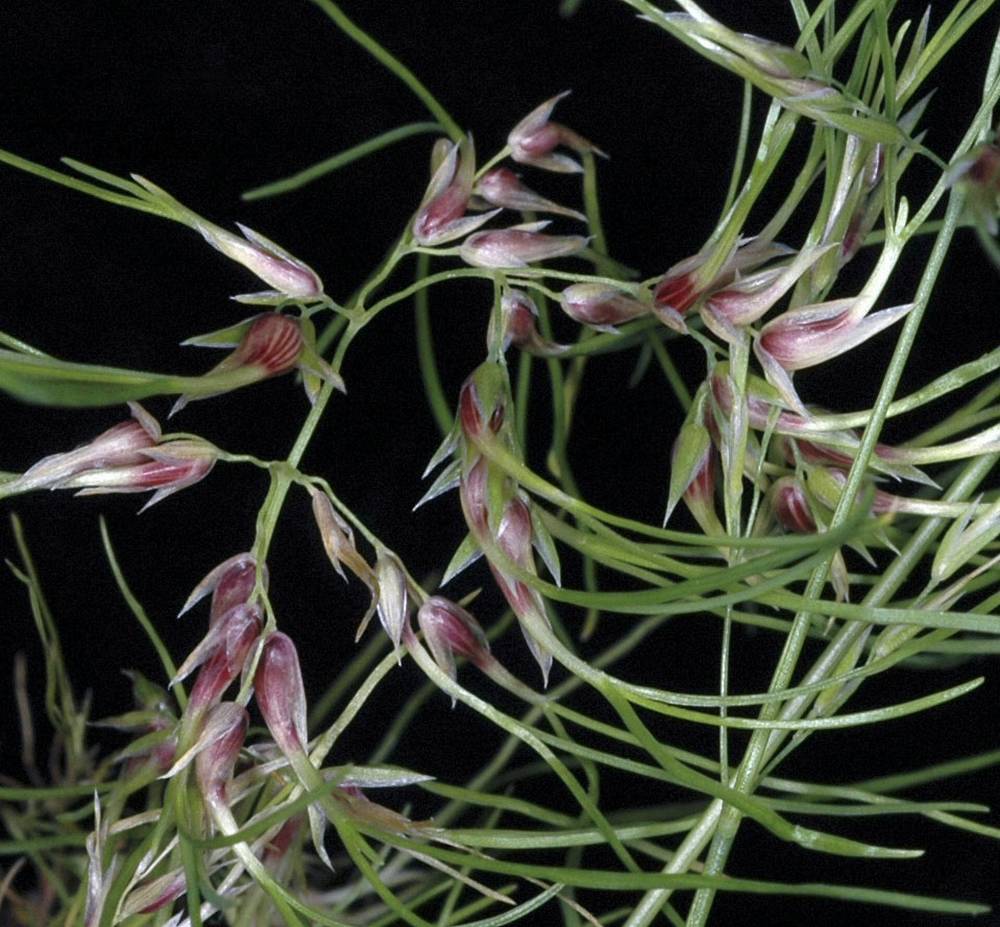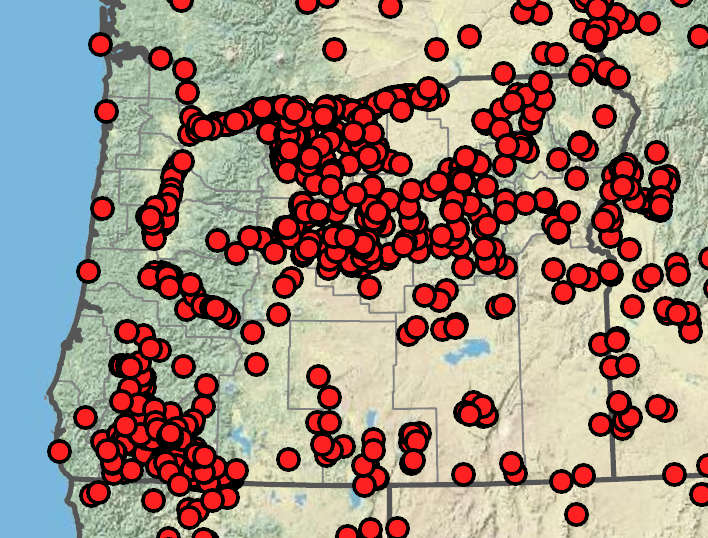Poa bulbosa
Poa piperi
bulbous bluegrass
Piper's bluegrass
bulbous at the base;
nodes terete.
nodes terete, 0–1 exserted.
intravaginal.
extra- and intravaginal.
sheaths closed about 25% of their length;
basal sheaths swollen at the base;
ligules 1–3 mm;
blades flat, 1–2.5 mm wide; soon withering.
sheaths closed 33–50% of their length, bases of basal sheaths glabrous, collars of at least some leaves usually sparsely short-hairy;
ligules 1–2 mm, blades of tillers to 40 cm long;
upper surface moderately to densely scabrous or minutely hairy on and between the veins;
cauline blades involute, 1–3 mm wide;
lower surfaces smooth;
upper surfaces sometimes sparsely hairy;
blades much reduced higher on the culm; uppermost blades 1–4.5 cm.
ovoid, 3–12 cm;
branches 2–5 per node, ascending to spreading.
erect to nodding, lanceoloid to ovoid, loosely contracted; sparse, 4–8 cm;
spikelets 18–60;
branches ascending; lax, 3–8 cm long, 1–2 per node, with 3–8 spikelets.
3–5 mm;
florets 3–7, commonly all or all but the lowest producing bulblets, occasionally all producing seeds.
6–9(11)mm; to 3 times as long as wide;
florets 2–5(7);
rachilla internodes 1–2 mm long.
keels scabrous;
lower glumes 3-veined;
upper glumes shorter than or subequal to lowest lemma.
subequal;
lower glumes 3-veined.
with cobwebby hairs or glabrous.
with diffuse; soft cobwebby hairs about 50% as long as the lemma.
lanceolate, 3–4 mm, distinctly keeled, glabrous throughout, or keels and marginal veins shortto long-villous; area between veins glabrous or softly puberulent;
tips acute.
lanceolate, 4–6(7)mm, distinctly keeled, glabrous throughout; smooth or sparsely to moderately finely scabrous;
keels scabrous;
tips acute.
developed and 1.4–2 mm, or aborted late in development, or not developed.
vestigial and 0.1–0.2 mm, or 2–3 mm.
=21–42.
=28.
Poa bulbosa
Poa piperi
Sunny to partly shady disturbed grasslands, shrub steppe, roadsides. 0–2300 m. All ecoregions except Est. CA, ID, NV, WA; throughout US; Mexico; temperate regions worldwide. Exotic.
Poa bulbosa is usually recognized by the bulblets produced in the inflorescence. Occasional non-bulblet-producing plants can be recognized by their bulb-like shoot bases and the presence of bulb-bearing individuals nearby. Some botanists recognize two subspecies, P. b. ssp. bulbosa producing only normal caryopses and P. b. ssp. vivipara, producing bulblets. In Oregon, populations either are entirely viviparous or include both viviparous and seed-producing plants.
Forest openings on serpentine soils. 300–1600m. CR, Sisk. CA. Native.
Poa piperi is a dioecious, usually glaucous grass with nearly transparent glumes and cobwebby callus hairs.
Rob Soreng, Barbara Wilson, Richard Brainerd, Nick Otting
Rob Soreng, Barbara Wilson, Richard Brainerd, Nick Otting
- Local floras:
BC,
CA,
OR,
WA
- Local Web sites:
CalFlora,
CalPhotos,
Flora NW,
PNW Herbaria
WildflowerSearch
iNaturalist (observations)
USDA Plants Database
- LBJ Wildflower Center
- SEINet
- Plants of the World Online
- Encyclopedia of Life
- Wikipedia
- Google Image Search





